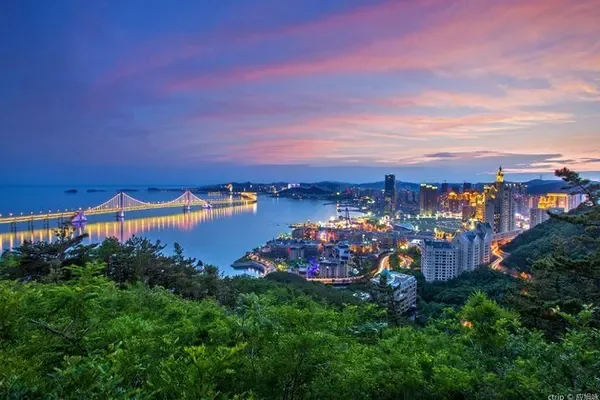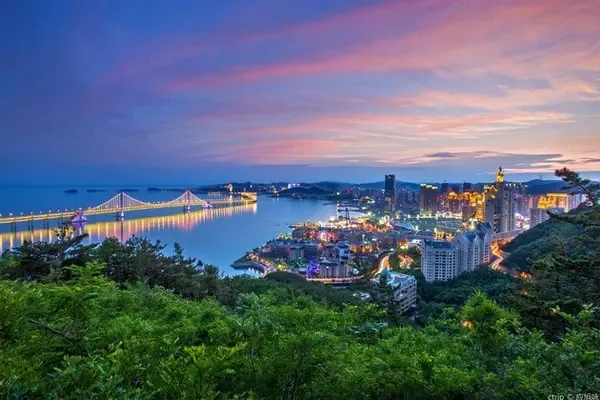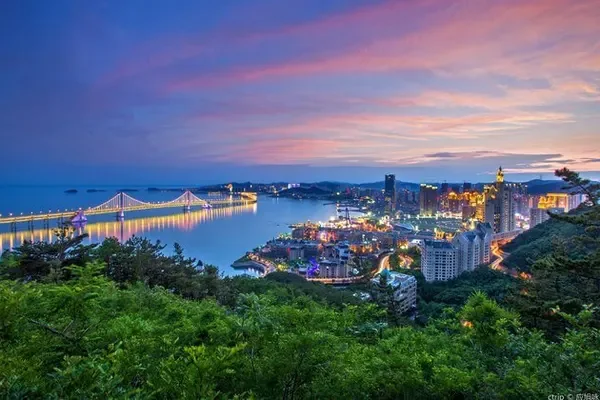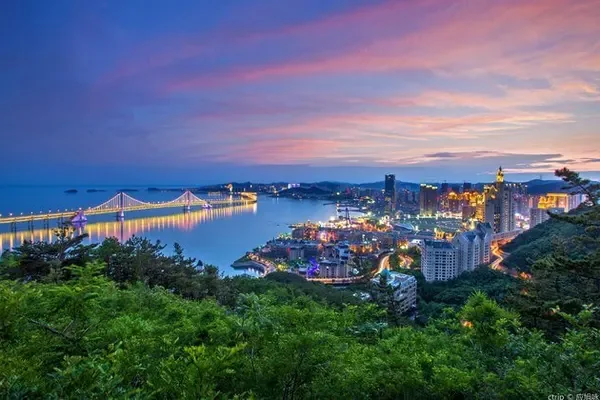Yuxian County, Hebei Province, was called Weizhou in ancient times, also known as Luochuan. It is an ancient cultural city with a rich history. On January 22, 2011, the launching ceremony of the "2011 Chinese Cultural Tour" in Hebei Province and the opening ceremony of the "Yu County Folk Culture Festival" in Zhangjiakou City were grandly held in Yu County. A three-day folk culture gathering tour was carried out in Yu County. Wherever he went, he left a deep and unforgettable impression on the reporter.

Yuxian County is located in the northwest of Hebei Province, bordering Beijing and Tianjin in the east. During the Five Dynasties and Sixteen Kingdoms period, it was one of the "Sixteen States of Yanyun" in history, known as "the first state in the west of Beijing". As the county seat of Yu County, which was first built in the second year of Daxiang in the Northern Zhou Dynasty and rebuilt in the tenth year of Hongwu in the Ming Dynasty, it is the most complete ancient city in the west of Beijing. Yuxian County has a long history and profound cultural heritage. Yuxian County is unique in paper-cutting and is well-known both at home and abroad. A famous historical and cultural city in Hebei Province".

On the morning of January 22, 2011, the wind gathering group set off from the Xinyuzhou Hotel in Yuxian County where they stayed, and drove westward for more than 20 minutes. They first came to the West Ancient Castle in Nuanquan Town. Xigubao Village was first built in the Ming Dynasty and rebuilt in the Qing Dynasty. The plane of the castle is square, 330 meters long from north to south, 260 meters wide from east to west, with a total area of 67,300 square meters. The city wall is made of rammed loess. There is a small brick-built urn city in the east of the north and south fort walls.

Both the north and south urns are square in plan, with a side length of about 50 meters. Both urns open to the east, and each has a gate. There are dizang temple, Jiutian Pavilion, theater building, Guanyin temple and other buildings in the urn city. In the west, there is a small brick city tower protruding. This castle has a complete structure and a varied layout. It is a typical village fort. This place integrates the four cultural wonders of "ancient dwellings, ancient temples, ancient castles, and ancient theater buildings". It is the most unique and best-preserved example among the 800 castles in ancient Weizhou. Now it is a national key cultural relics protection unit.

Due to the antique characteristics of West Castle, it has attracted many film and television artists to film here, such as "The Saint of Folk Opera", "Zuo Zongtang", "New Shaolin Temple", "Unconsciously Flowing Old" and many other film and television dramas. This scene was shot. In particular, Jiang Wen's movie "The Devil Is Coming" directed by Jiang Wen in 1998 used this village castle as one of the main locations, and invested in the construction and renovation of many scenic spots that still exist today.

The bus full of fans came to West Castle. When the reporters got off the bus, the archway with the four characters "Wuhua Tianbao" that was seen in the movie "The Devil Is Coming" immediately caught people's eyes. Going through the archway, you will come to the doorway in front of the castle. Not far from the first gate is the Fort Gate. Take a closer look at the bluestone road at the foot of the gate of the Fort Gate. The ruts on the smooth and damaged road reveal the vicissitudes of history.

Entering the fort gate is a straight ancient street. In the straight street, there are several alleys running through the east, west, north and south. According to historical records, the ancient town belonged to Jizhou during the Yao and Shun periods, belonged to the Dai state during the Shang and Zhou dynasties, and was a place where Zhao, Qin and other states competed during the Warring States period. During the Qin, Han, Three Kingdoms, and Jin Dynasties, it belonged to Dai County, and Nuanquan belonged to Pingshu County. The existing tall Fengtu Han Tombs in the west of the town are buried with the bureaucrats and officials of the year. During the Tang and Song Dynasties, it was a place where the Han nationality and the minority nationalities competed. The town was built in the Yuan Dynasty, and developed into "three castles, six lanes, and eighteen villages" in the Ming and Qing Dynasties. Since then, Nuanquan has become a transportation hub and business center in the west of Yu County.

The tour guide said: The distance between the north and south gates of the West Ancient Castle is 227 meters, forming a main street. There are three small streets and alleys on the east and west of the main street. There are 180 ancient residential courtyards in existence, including 5 large serial courtyards (also known as nine serial courtyards), 49 small and neat ancient courtyard houses, and 246 ancient folk houses with ornamental and research value.

These dwellings are all of brick and wood structure, with wooden lattice windows, wood carvings and paintings, green strips and cornerstones, white gray and blue bricks and tiles, ridged roofs, and kissing animals installed. The windows of the residential buildings are all open to the courtyard, but not to the alley. Although it has been eroded by wind and rain for hundreds of years, its thick and thick wood and stone, beautiful and delicate brick carvings and wood carvings, and simple and elegant oil decoration and painting still show the prosperity and style of that year. Climbing up to the gate tower of the fort and looking down from the north to the south, there are row upon row of residential houses, tall and neatly ridged kissing animal cylindrical tile roofs, and steep and majestic temples and towers, which are full of the charm of an ancient city.

The wind gathering group wandered into the ancient streets and alleys, and one after another, ancient houses appeared in front of them. Under the guidance of the tour guide, they entered a courtyard with two entrances. The houses in the courtyard are well laid out, and people still live in it. Seeing so many strangers coming here suddenly, the dogs in the yard kept barking "Wow, woof, woof". Although it was harsh, it exuded a strong breath of life.

There are many buildings in Nanweng City, including 74 temples, halls and pavilions, with a construction area of about 1,500 square meters. From Zhijie to the southernmost point is a small and exquisite ancient theater building with flying ridges and brackets and colorful paintings. The theater building is 13 meters wide and 8.5 meters deep. It also increases the usable area of the theater building in a limited space. This design form is unique among nearly 700 ancient theater buildings in Weizhou.

Entering the courtyard from the brick-carved vertical flower gate on the west side of the theater building is the Ksitigarbha Temple (commonly known as the Temple of the King of Hell), which is one of the places for Buddhist activities approved by the religious management departments of Hebei Province and the city. The temple is divided into upper and lower floors, a courtyard-style building. There are 12 all-brick cave dwellings on the lower floor.

On the upper floor are the Dizang Hall, the Ten Halls of Yan Jun, the Ghost King Hall, the Guanyin Hall, the Sanyi Temple, the Horse Temple, and the Bell and Drum Tower. The layout of these buildings is rigorous and ingenious, the brick and wood carvings are exquisite, and the statues and murals are lifelike. The corridors embrace the buildings, the winding paths lead to seclusion, and a novel landscape of one scene after another, one scene after another is created in a small space. Looking north from the dizang temple, you can clearly see the ancient castle straight street and the vertical and horizontal streets and alleys you just walked through.

After the visit to the West Ancient Castle, the wind collecting group drove to Nuanquan Town, where the reporters visited the famous Nuanquan Academy. The academy was first built in the Yuan Dynasty and was supervised by Wang Min, Shangshu of the Ministry of Industry of the Yuan Dynasty. In the northeast corner, there is Kuixing Building, which is a three-story brick and wood structure. You can see the surrounding scenery from a distance by climbing to the top. The shade of the academy covers the sun and the environment is quiet. It is not only a quiet place to study, but also a good place to escape the heat in summer.

It is recorded in "Weizhou Zhi Channel Map": "In Nuanquanbao, thirty miles west of the city, the source of the spring is divided into east and west by stone urns." The name "Nuanquan" comes from this. The most famous of the springs is Fengyuan Chishui. The spring water flows out through the east and west dragon mouths facing each other, and flows slowly around the village. In the south of Fengyuan Pool is the Pavilion Academy. The main building in the academy is a pavilion of about 80 meters 2. The spring water passes through the pavilion underground. There is a flowing well in front of the pavilion. "Water passing through the gazebo and octagonal well" is one of the "eight scenic spots" in Yuxian County. The spring water waters hundreds of acres of vegetable gardens and rice fields in the south of the town along the open channel around the village, and finally flows into the Huliuhe Reservoir in the southeast of the town. The warm spring water flows out within 1.5 kilometers without freezing in cold weather.

Not far from Nuanquan Academy is the famous Shuhua Square in the town. Known as the project of "Treating Trees and Flowers in the World", it is a well-known folk traditional activity project in Weizhou, Hebei Province. Although tree flowering is performed at night, it may be a rare enjoyment to come here to see the scene during the day. I saw patches of regular traces of burnt iron on a city wall building. There are also scattered iron pieces and iron slag under the wall.

That night, at the launching ceremony of the "2011 Chinese Cultural Tour" in Hebei Province held here, the reporters of the folklore group finally watched the shocking and spectacular performance of tree flowering. "Dashuhua" is one of the ancient festival fires in Nuanquan Town, which is said to have a history of more than 300 years. At the performance scene of "Striking Tree Flowers", the reporter took a precious photo with the iron plate solidified by tree flowers in his left hand and a wooden spoon containing molten iron in his right hand in front of the background wall scorched by molten iron.

The night in Yuxian County was minus 16 degrees, but it was really cold. Wearing a down jacket during the day did not feel cold, but at the event site that night, the event organization unit gave each reporter a military coat to keep out the cold. Even so, wearing The bloated reporter was still shivering from the cold.

In the past, poor people had no money to buy firecrackers and fireworks during the Chinese New Year. In order to celebrate the harvest and pray for good weather in the coming year, the local ironworkers entertained themselves by turning some scrap iron into molten iron, scooping it out with a wooden spoon made of strange willow roots and pouring it on the wall. After the iron juice at more than 1000 degrees Celsius burst, thousands of sparks burst out, like a leafy tree crown, so it is called "tree flower".

The "tree flower" is full of brilliance and various poses when it is played, and its spectacular scene is no less than the fireworks show on the National Day. It is a game for the brave, it is also a unique skill of Nuanquan people, and it is the only one in the country. In the past, it was only available during the Lantern Festival, but now there are also performances on the third and fifth day of the first lunar month.

The protagonists of the "Striking Tree Flowers" performance are three artists wearing straw hats and sheepskin jackets on the back. One is surnamed Zhong and the other two are surnamed Wang. For anti-scald use. On the nearly 10-meter-high city wall behind them, there are traces left by tree-cutting flowers seen during the day. After the hot molten iron was poured into the basin in front of the city wall, a master came on stage.

I saw him stretch out the white spoon in his hand to the molten iron, and the flames sprang up all at once. When he threw spoonfuls of molten iron towards the city wall with all his might, the pearl-sized red water drops exploded into clusters of small umbrella-shaped golden sparks, flying along the city wall to the distance. Scattered in all directions, scenes of fiery trees and silver flowers blooming in the night sky.

The folk culture of Weizhou can be described as diverse, colorful and colorful. The most famous of these is the art of paper-cutting. During the stay in Yuzhou, the reporter successively visited many cultural landscapes and folk cultures such as the Yuxian Museum, the First Street of Chinese Paper-cutting, and the Yuhuang Pavilion.

The Yu County Museum is located in the famous Sakyamuni Temple in the south gate of Yu County, Hebei Province. The museum is composed of the exhibition of historical relics in Yuxian County, the exhibition of historical celebrities in Yuzhou, and the exhibition of gold and stone statues collected in Yuzhou Museum. More than 300 exhibits such as calligraphy, painting and currency vividly understand the characteristics of Weizhou in various historical eras such as the Neolithic Age, Han Dynasty, Tang Dynasty, and Liao Dynasty.

The Sakyamuni Temple where the museum is located, commonly known as the Reclining Buddha Temple, is also one of the national key cultural relics protection units. The temple of Sakyamuni is magnificent in scale, including the Hall of Heavenly Kings, the Nave Hall, and the Hall of the Reclining Buddha. The State Administration of Cultural Heritage, Hebei Provincial Administration of Cultural Relics, Hebei Provincial Institute of Ancient Architecture and other units all believe that the nave of Shakya Temple has the architectural characteristics of the Yuan Dynasty. The nave is 3 rooms wide, and its architectural form is a single eaves Xieshan tile roof. The building area is 141.05 square meters, the roof is quite flat, the eaves and the four wing corners are raised, which is more obvious when viewed from the side, the eaves of this hall are 1.5 meters, and the proportion and shape of the bucket arches under the outer eaves are handled very cleverly , making the nave more solemn and solemn.

The wind-collecting group left Sakyamuni Temple and came to the "Chinese Paper-cut Street" located at the junction of the ancient urban area and the new urban area of Yuzhou in the south of Yuxian County. "China's First Paper-cut Street" inscribed by Luo Yang, Secretary of the Party Group of the Chinese People's Association and Executive Vice Chairman County paper-cut individual merchants" store. Especially during the visit to the National Paper-cut Boutique Museum, the vivid and colorful paper-cut art is really pleasing to the eye and breathtaking.

The paper-cut in Weizhou is quite different from other places. This kind of paper-cut is not cut with scissors as we understand it. Instead, various types of carving knives are used to carve various designs and colors on rice paper. During a visit to the Wang Laoshang Paper-cutting Art Museum in Yuxian County, the reporter saw the whole process of paper-cutting in the store. I saw the little girls earnestly carving with knives and coloring the carved works with colorful paints. In a Beijing opera facial make-up work, every beard on the characters can be carved out finely, and the characters in the work are vivid, lifelike, and extremely dynamic. It is really an excellent work of paper-cutting technology.

Yuxian County is known as the "Hometown of Chinese Paper-cutting Art", and Nanzhangzhuang Village, located in the south of Yuxian County, is the birthplace of Yuxian paper-cutting. There are 8 large-scale paper-cut factories in the village, and there are more than 3,000 varieties of paper-cut in six categories, including opera characters, flowers, birds, fish and insects. Visitors can not only buy paper-cuts for the Year of the Tiger and various exquisite paper-cut artworks here, but also watch the paper-cut production process on the spot.

The last thing Weizhou visited was Yuhuang Pavilion. Yuhuang Pavilion is located on the north city wall of Yuzhou, Hebei. The Yuhuang Pavilion is tall and majestic. The entire pavilion is divided into two courtyards, the Tianwang Hall and the main hall of the Yuhuang Pavilion, on the same central axis. The Tianwang Hall in the front yard is three rooms wide, two rooms deep, three main meditation rooms in the east and west, and three lower meditation rooms in the east and west. There are corner gates on both sides of the Tianwang Hall. Through 18 stone steps, you enter the gate in the backyard and lead directly to the main hall.

In front of the main hall of Yuhuang Pavilion, there is a bell tower on the left and a drum tower on the right. The Yuhuang Pavilion was first built in the tenth year of Hongwu in the Ming Dynasty (1377). It has been repaired many times in successive dynasties, and there are 7 rebuilt steles. The Jade Emperor Pavilion is named to worship the Jade Emperor, but in fact it is to guard against foreign enemies. Yuzhou City was built in the second year of Daxiang in the Northern and Southern Dynasties (580). The city has thirteen steps in seven miles and four feet in height. The east is Anding Gate, the south is Jingxian Gate, and the west is Qingyuan Gate, but the north city wall has not been opened. There is a city gate, and there is a Yuhuang Pavilion. There is no north gate pavement in Weizhou City. This is in line with the general situation of defending against harassment by the remnants of the Yuan Dynasty in the early Ming Dynasty. Climbing to the Yuhuang Pavilion, you can overlook the beautiful scenery beyond the Great Wall by the threshold. When I came to the Yuhuang Pavilion, it was just when the sun was setting. Looking west from the Yuhuang Pavilion, through the eaves of the Yuhuang Pavilion, I saw a touch of the setting sun hanging in the distant sky, a magnificent scenery of the Yuhuang Pavilion. Fascinating... (Photo: Feng Ganyong)



